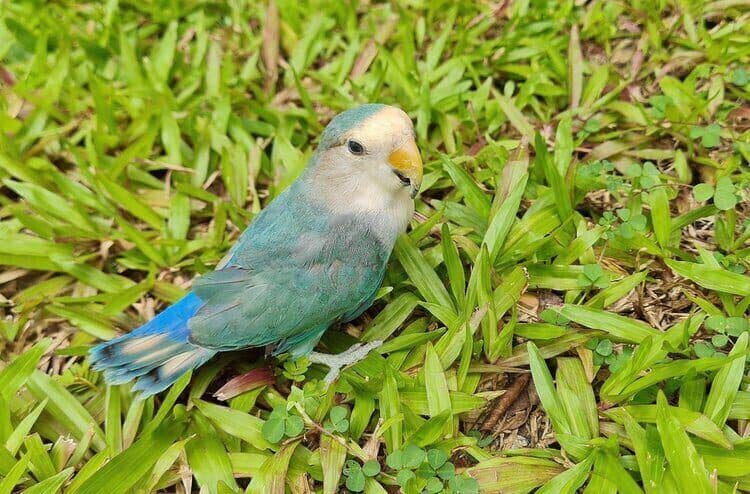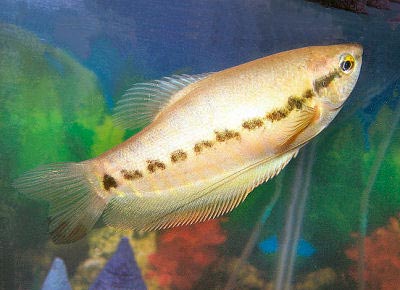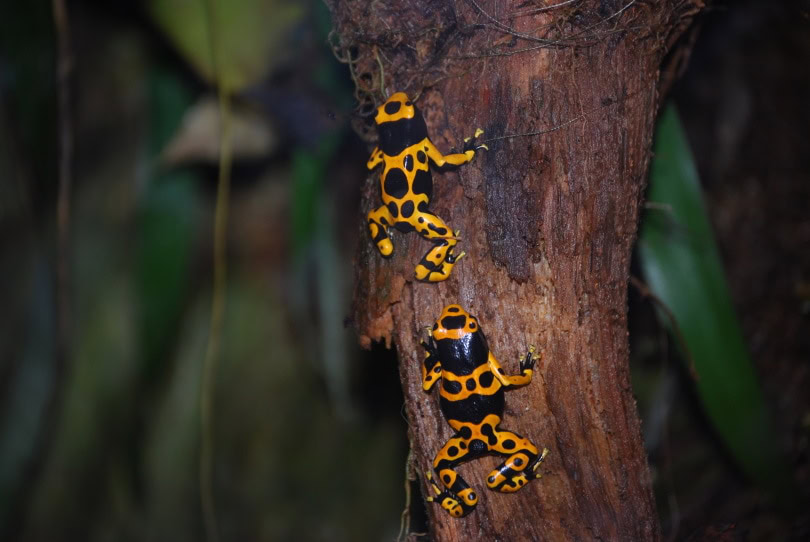The Dutch Blue Lovebird is a beautiful blue mutation of the Peach-faced Lovebird, and runs a close second in popularity to the lovely Lutino Lovebird, a yellow mutation of the Peach-faced. This little bird has all the wonderful charm and characteristics of the Peach-faced, being active, playful, and amusing. They are intelligent little birds and make a wonderful companion and friend.
The Dutch Blue Lovebirds are very social and love companionship. Their natural behavior is to live closely with a companion so are often kept with another lovebird. Though they make a very fine and affectionate pet when hand-raised, they will need a lot of attention if kept singly. Most are kept in pairs to satisfy their considerable need for constant companionship, mutual preening, and socialization.
Scientific Classification
| Kingdom: | Animalia |
| Phylum: | Chordata |
| Class: | Aves |
| Order: | Psittaciformes |
| Family: | Psittacidae |
| Genus: | Agapornis |
| Species: | roseicollis |
Scientific Name
Agapornis roseicollis var.
Description
The Dutch Blue Lovebird is a mutation of the Peach-faced Lovebird. It is very similar to the white-faced blue Lovebird as both these birds have a reduced amount of the red and yellow pigments in their feathers.
The Dutch Blue Lovebird, which originated in Holland in about 1963, can be distinguished from the Whitefaced Blue as it has a slightly creamy colored face and a solid orange band across the forehead. While the Whitefaced Blue Lovebird, originating in the early 1980’s, has a pure white face and only a faint (if any) orange tinge to it’s forehead. Both birds have greenish-blue in the general plumage and bright blue feathers on the rump and onto the upper part of the tail.
Another mutation that is very similar to the Dutch Blue Lovebird is the Seagreen Lovebird. It is half Dutch Blue and half Whitefaced Blue and has essentially the same head and facial coloration as the Dutch Blue, but has a more greenish general plumage.
Size – Weight
The Dutch Blue Lovebird will get up to about 6″ – 7″ (16 – 18 cm) in length.
Care and feeding
A roomy cage is required as lovebirds are very active. If you have a tame pet that is kept in a small cage, it needs to be let out for extended periods to fly about. Your pet they will enjoy a variety of seeds, fruits, vegetables, and commercial pellets.
Social Behaviors
A lovebird is a very social bird with it’s companion, and it is generally thought to be essential for their good health and happiness that they be kept in pairs rather than singly. They can, however, be aggressive towards other birds in an aviary setting.
Activities
Loves to fly, climb, and play. Provide lots of room and lots of toys.
Breeding/Reproduction
The Dutch Blue Lovebird is excellent for the beginning breeder. These birds will breed well in either colonies or in a single pair, and have the same behaviors as the Peach-faced Lovebird. When you provide them with a nest box, be sure to also provide lots of willow twigs, palm fronds, or other nesting materials as they will build a small nest of their own inside of the nest box. They will carry the nesting materials between their back and rump feathers.
The hen will lay four to five eggs which are incubated for about 23 days. The young fledge (leave the nest) in about 30 to 38 days but will still be dependent until about 43 days. When they become independent, remove the young to their own housing.
Potential Problems
This bird has a moderate but metallic shriek and can be somewhat noisy for parts of the day.
Availability
The Dutch Blue Lovebird is very popular and is readily available.
Featured Image Credit: Cheng Wei, Shutterstock










